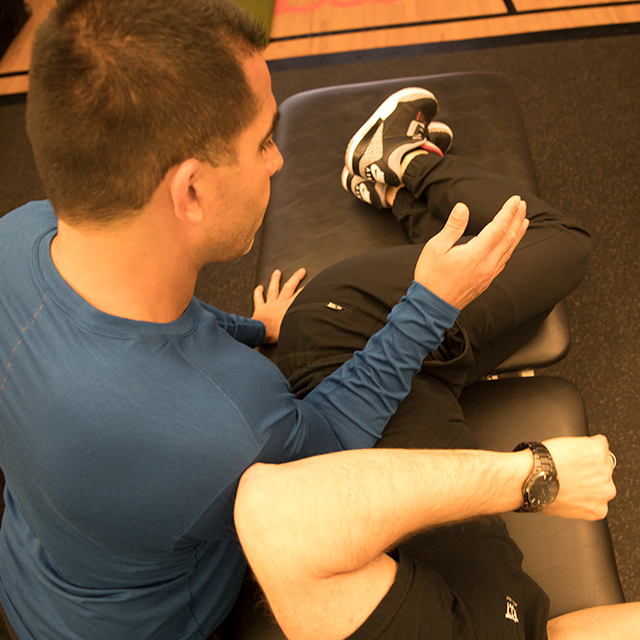The Active Release Explained

There has a lot of buzz around the active release in the past few years but little definition around it. An active release is a manual technique commonly performed by physical therapists for rehabilitative purposes. At React, physical therapists trained in the Reavy Method© utilize active releases on a daily basis. You might be asking yourself what exactly is an active release, and what do these active releases do?
Like most things in the human body, an active release is not as simple as it may sound, and there are many changes taking place inside the body rather than just ‘forceful loosening’ of the muscle. To fully understand what is really happening during an active release, we first have to understand what it is, the physiology behind it, and why it is beneficial.
What is an active release?
An active release is a hands-on soft tissue technique targeting adhesions that develop in the muscles and soft connective tissue throughout your body. It first involves palpation to locate specific adhesions, direct contact to these adhesions, and an active or passive movement to take the muscle or tissue through its normal range of motion.
What is an adhesion?
An adhesion occurs due to the crosslinking of collagen fibers around muscle tissue resulting in decreased tissue extensibility, or what most people may describe as ‘tightness’.
Why do adhesions form?
Adhesions can form due to a variety of reasons including but not limited to:
- Acute or chronic injury
- Overuse
- Weakness
- Poor posture
- Immobilization
Why is an active release painful?
Adhesions often entrap blood vessels and nerves that supply the area of tissue resulting in the disruption of normal blood flow and nerve conduction. This results in a cascade of events that occur on the molecular level responsible for increasing chemical mediators associated with the sensation of pain. This is why touching a tight area of muscle can be painful. Because an active release targets these adhesions, the individual may experience some level of discomfort. However, it should never go beyond the individuals’ tolerance. As a general rule, the level of discomfort should not hinder your ability to actively move that muscle. If it does then the pressure may be too much.
What does an active release do?
Decrease muscle tension:
Through the combination of direct pressure and movement of the tissue involved in an active release, a neurological response is generated that decreases the activity of motor neurons responsible for the presence of tight muscles. This occurs through the activation of different neural feedback loops. Basically, it is retraining the nerve-muscle connection that is causing these tight areas of tissue in a way to make the muscle looser.
Improve muscle activation:
Nerves responsible for sensing muscle/tissue tension send signals to your central nervous system (CNS) to inhibit the activation of those tight muscles. This is a defense mechanism that is naturally programmed in the body to prevent the onset of the injury. By decreasing muscle tension we can elicit a change at the level of the motor unit (motor neuron and muscle fiber) and improve its ability to activate.
Decreased tension → Decreased inhibition → Increased activation → More effective muscle
Increase blood flow and lymphatic flow:
Decreasing tissue tension helps to relieve the constriction of blood and lymphatic vessels
Increase healing:
By increasing blood flow allows for more nutrients to reach the area necessary for healing. Increasing lymphatic drainage results in more toxins leaving the injured site which also positively affects healing.
Decrease pain:
Decreased tension → decreased chemical mediators responsible for stimulating pain sensors → decreased pain
Improve joint positioning and movement:
Decreased tissue tension decreases the pressure on joints allowing them to sit in a better position at rest, allowing you to ultimately move more freely and efficiently.
Unfortunately, these active releases are not a one-time fix solution. Although beneficial, they are most effective when used in combination with a variety of treatment methods and corrective exercises prescribed by a physical therapist. Always be sure to consult with a licensed physical therapist to see how incorporating active releases into your daily routine can benefit you.